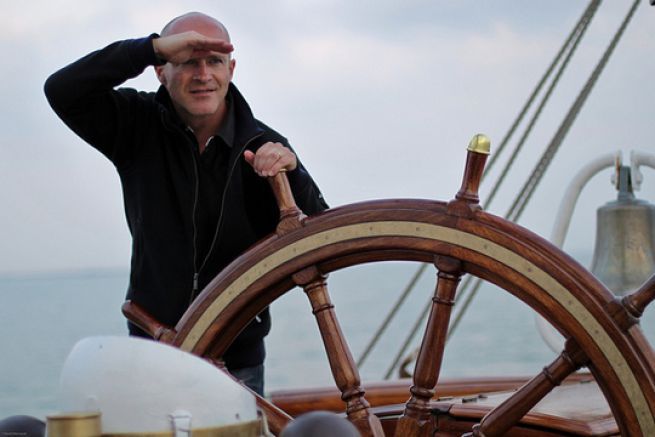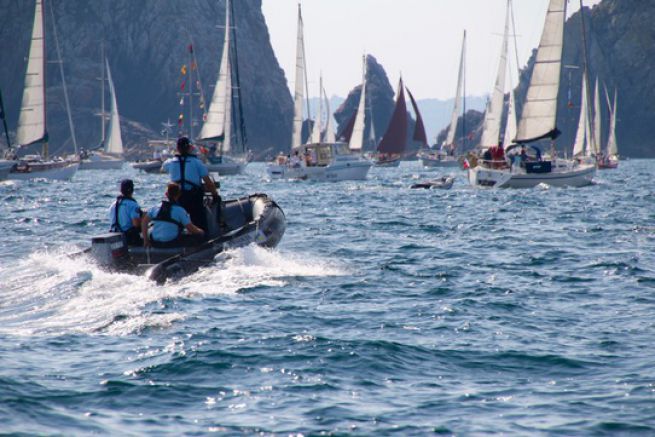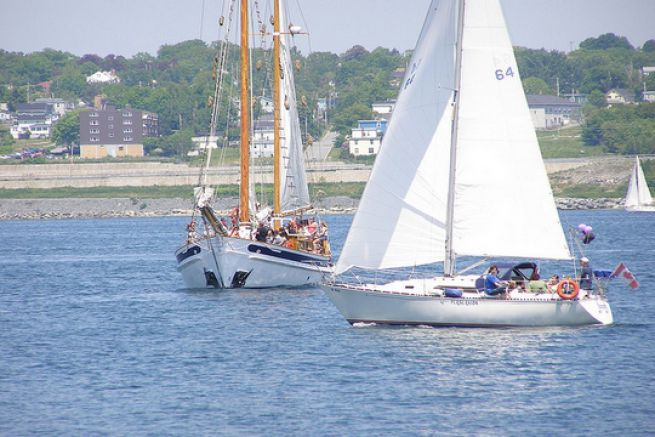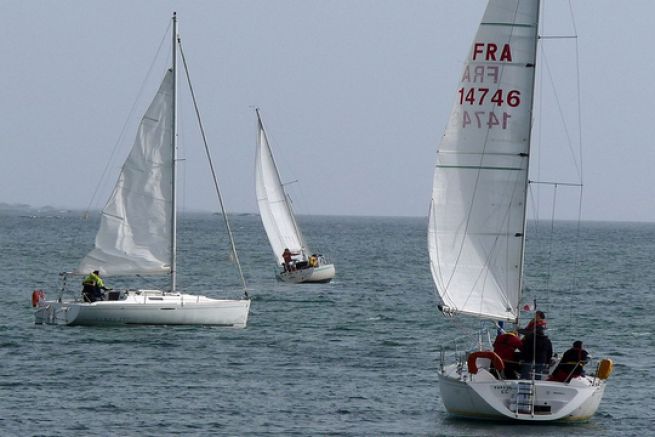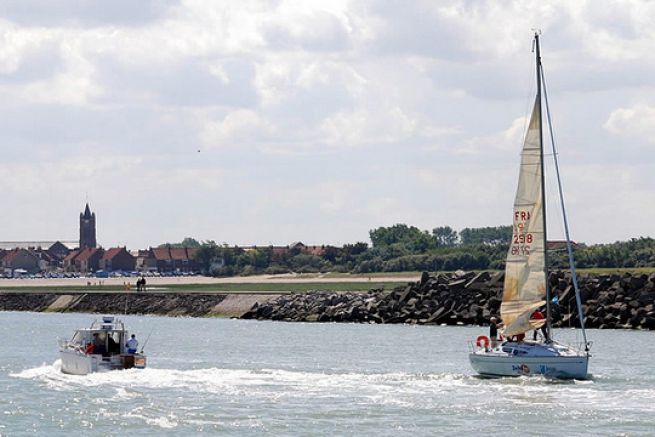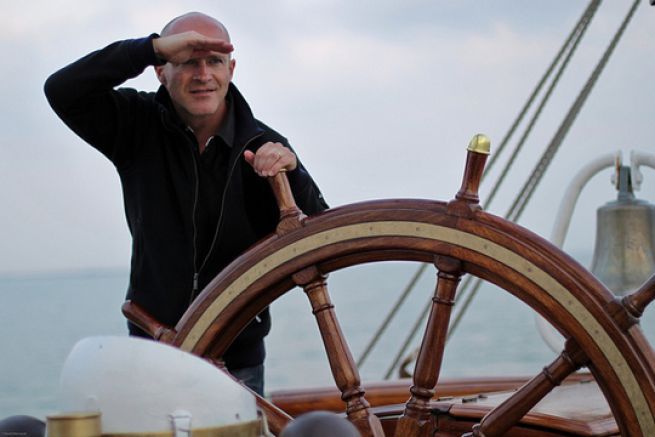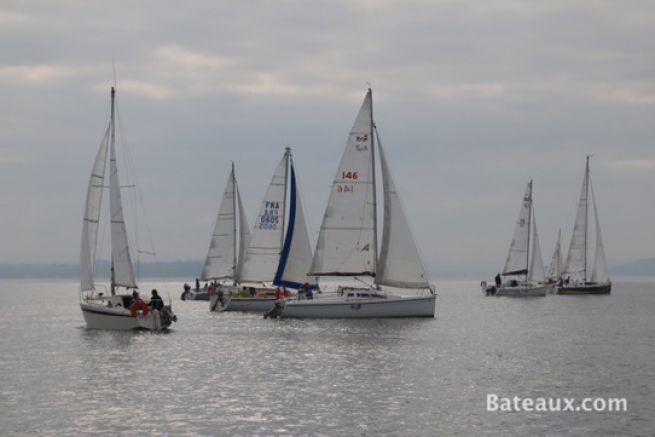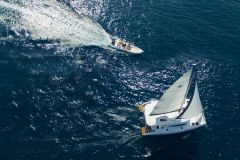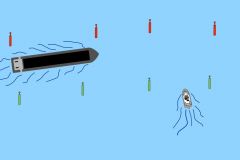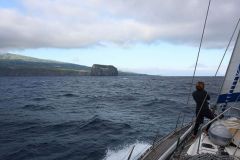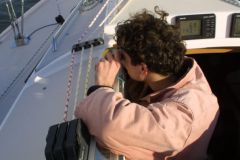Rule 12 - Sailing Ships
When two sailing vessels approach each other with a risk of collision, one of the two vessels must move away from the other's course. Here is the procedure:
When ships receive wind from a different side, the one receiving the port wind must move away from the other's course. The starboard starboard sailboat is therefore preferred.
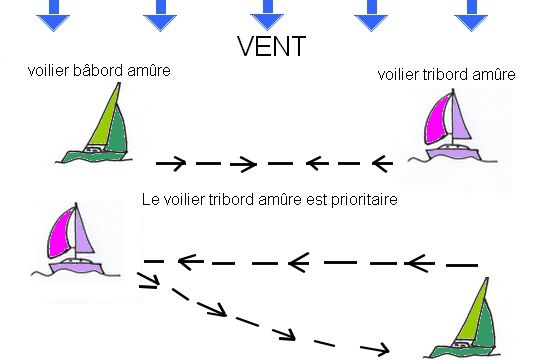
When both vessels receive the wind from the same side, the windward one must move away from the leeward one.
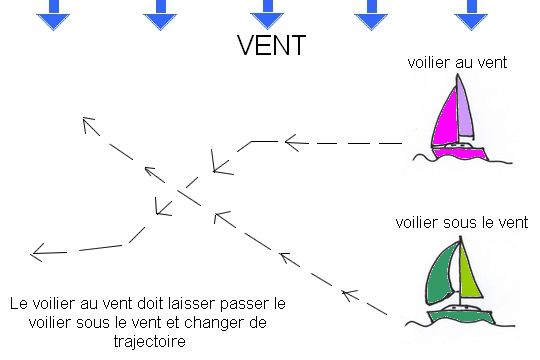
If a vessel receiving the port wind sees another vessel upwind and cannot determine with certainty whether that other vessel receives the port or starboard wind, the first vessel must deviate from the course of the other. For example, sailboat B must be disturbed for sailboat A and sailboat C and sailboat C must be disturbed for sailboat A.
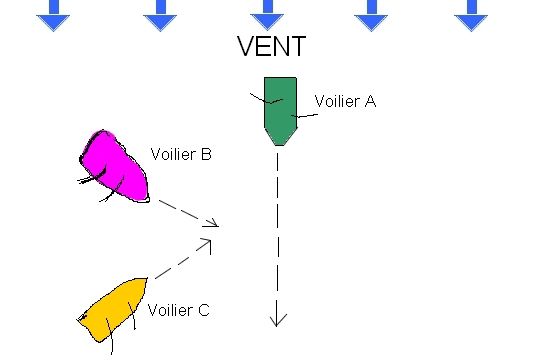
For the purposes of this rule, the side from which the wind comes shall be considered as the side opposite the mainsail's furling edge or, in the case of a square light vessel, the side opposite the furling edge of the largest auric (or triangular) sail.
Rule 13 - Vessel Overtaking Another
Any vessel that overtakes another vessel must deviate from the course of the other vessel. A vessel is considered to be a vessel overtaking a vessel that is approaching another vessel from a direction of more than 22.5 degrees abeam abeam, whether sailing or motorized. This means that in this position, the overtaking vessel sees, at night, only the tail light of the vessel ahead of it. If he begins to see his side lights, he must continue to move away and manoeuvre. In the event that the pursuing vessel is unable to determine whether it is catching another vessel, it must consider that it is catching it and manoeuvre in this direction.
No subsequent change in bearing between the two vessels shall cause the vessel catching the other to be considered as crossing the latter's course within the meaning of these rules or to relieve it from the obligation to deviate from the course of the caught vessel until it is fully prepared and clear.
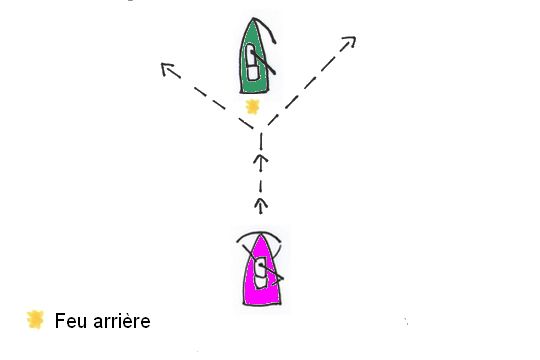
Rule 14 - Vessels on directly opposite routes
When two power-driven vessels are on directly opposite or approximately opposite courses in such a way that there is a risk of collision, each vessel must turn to starboard to pass to port from one side to the other.
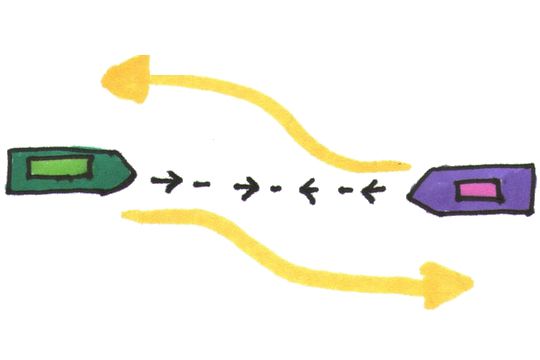
This situation occurs when a vessel sees another vessel in front of it or near it, so that at night it would see the mast lights of the other vessel by each other or almost by each other and/or its two side lights and that, during the day, it would see the other vessel at a corresponding angle.
In the event that a ship cannot determine whether this situation exists, it must consider it to be effective and manoeuvre accordingly.
Rule 15 - Vessels crossing each other
When two power-driven vessels are on courses that intersect in such a way that there is a risk of collision, the vessel seeing the other vessel to starboard shall deviate from the course of the other vessel and, if circumstances permit, avoid crossing its course to the bow.
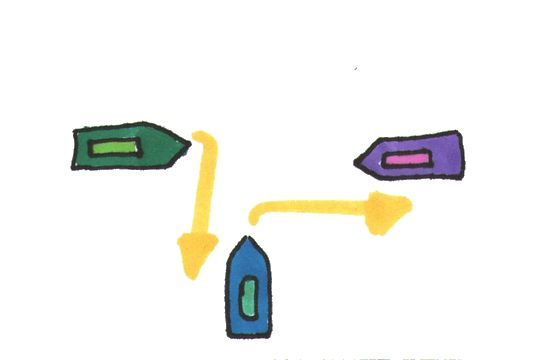
Rule 16 - Manoeuvring of the non-preferred vessel
Any ship that is required to deviate from the course of another ship shall, as far as possible, manoeuvre early and honestly so as to deviate widely.
Rule 17 - Manoeuvring of the Preferred Vessel
When a vessel is required to deviate from the course of another vessel, that other vessel (the preferred vessel) must maintain its heading and speed.
Nevertheless, the latter may manoeuvre, in order to avoid collision by his manoeuvre alone, as soon as it appears obvious to him that the ship which is obliged to deviate from its course is not carrying out the appropriate manoeuvre prescribed by these rules.
When, for any reason, the vessel that is required to maintain its heading and speed is so close to the other that collision cannot be avoided by the ship's manoeuvre alone, which must leave the course clear, it must do the manoeuvre that is best to help avoid the collision.
A power-driven ship manoeuvring to avoid a collision with another power-driven ship whose course intersects its own under the conditions and which does not manoeuvre to avoid a collision shall not, if circumstances permit, swing to port when the other ship is on its port side.
This rule shall not exempt a ship which must leave the course free from the obligation to deviate from the course of the other ship.
